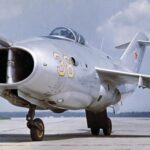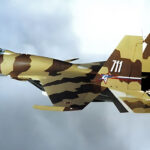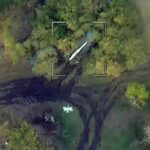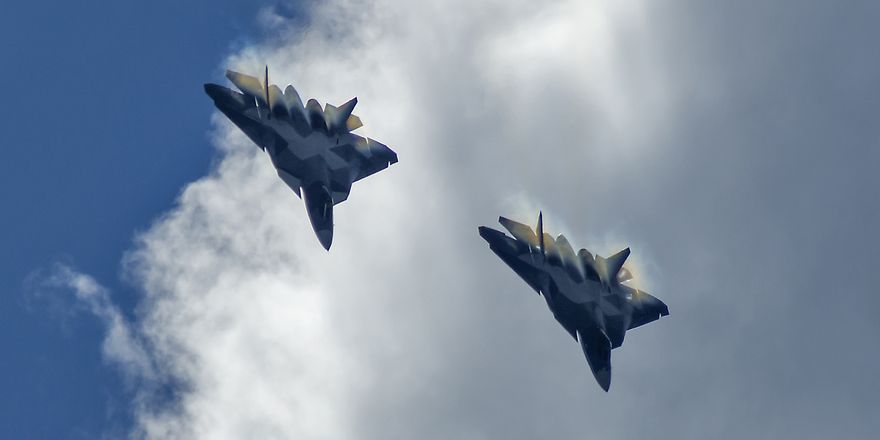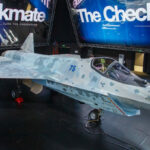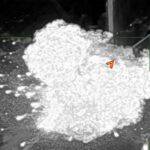On July 4, 1958 was issued the Decree of the USSR Council of Ministers 608-293 on the development of the airborne radar search and aiming system (RLSN). The importance of the work was determined by the fact that the vast areas in the north of the USSR had no continuous radar coverage. The only solution to the problem was to create a complex capable of bombering in a threatening direction. In addition to detecting targets, the new system had to solve the problem of targeting air defense fighters.
The lead developer of the system was designated NII-17 (now Concern Vega), the complex was named Liana. OKB-156 under the leadership of Andrei N. Tupolev became the developer of the carrier aircraft. It was decided to create the complex on the basis of Tu-114 passenger airplane which combines long range and flight time with relatively large fuselage volume enabling to accommodate electronic equipment and operator work stations. The project of the Tu-126 was approved in January 1960, two years later the first flight of the prototype took place.
The following requirements were made to the airplane and the radar complex: flight time – 10-12 hours; practical ceiling – 8000-12000 m; aerial targets detection range in the upper hemisphere for targets like MiG-17 – 100 km, IL-28 – 200 km, ZM aircraft – 300 km; data transmission range – 2000 km. Aircraft Tu-126 was required to submit for joint flight testing in the first quarter of 1961.
Developers of radio complex were designated NII-17, OKB-373, NII-25 and NII-101. OKB-156 became the lead company for the entire system. By the end of 1958 the customer gave the design bureau detailed tactical and technical requirements, approved by the Air Force command on April 9, 1959, and the Air Defense Command – September 2. The stage of conceptual design began, in the course of which the advanced radar Ozero was considered as one of the options for air and sea situation tracking station.
January 30, 1960 was approved the general view of the Tu-126 and the stage of working design began. By that time there was a real airborne radar Liana – a variant of ground station P-30, which was to be the basis of the whole radar complex.
According to the project, the most significant changes related to the fuselage design and composition of equipment, as well as a number of aircraft systems. Cockpit of the flight crew remained virtually unchanged, only in the workplace of the navigator was a little more cramped because of the additional equipment.
The upper deck was divided into the compartments. The first one accommodated the onboard computer, operator’s places and part of the Liana units. Behind it there was a checkroom, and then the second compartment, reserved for extra equipment. The third compartment housed a gunner’s station for the remote aft gun mount, which consisted of two AM-23 guns, a Krypton radar, and a TV sight. In the next, fourth compartment, there were resting places. The fifth bay was used for assembling units of the Liana station. The sixth compartment housed units of the radio system Crystal.
In the fifth compartment a powerful pylon was installed on the fuselage with a rotating radar antenna unit mounted on top. The lower deck housed some of the units of aircraft systems and equipment of radio-electronic countermeasures. Under the fuselage in the area of the fifth compartment was mounted fairing liquid and air radiators, which helped to maintain the normal temperature of the Liana station units. To ensure acceptable characteristics of the airplane’s directional stability and controllability, an additional large-area keel comb was mounted under the tail section of the fuselage. The number of portholes was significantly reduced.
In the course of further development of the project the composition and placement of equipment on the Tu-126 were slightly changed. First of all, they abandoned the stern installation as ineffective for this type of aircraft. Accordingly, the gunner’s workplace was abolished. To expand the capabilities of aircraft included a system of radio reconnaissance (RTR), which can detect the operating radar at a range of 600 km. Somewhat changed the placement of radio technical crew, which in addition to operators, radar included chief of complex, operators, systems, RTR and telecode data transmission, a technician and mechanic complex for operational repair work in the air. Above the first compartment installed a cowling of astrosextant heads, provided a number of measures of biological protection of the crew from the powerful radiation of the Liana station.
Subsequently, a large-scale program of tests was carried out, which included the definition of flight performance, changed relative to the base passenger aircraft Tu-114 because of the installation of a large mushroom-shaped fairing radar station, training refueling in the air and testing of special equipment. After a detailed definition of the technical shape of the Tu-126 clarified its flight characteristics. According to conceptual design its maximal flight speed was 825 km/h, cruising speed was 650-700 km/h, practical range with refueling was 11000 km, time of barrelling at the border of 2000 km was 3 hours.
The aircraft was taken into service in 1965, and in 1966 the first machines were delivered to the combat unit in Siauliai. Eight production machines and one prototype were built. Due to an incomplete complex of special equipment, the aircraft could only cope with a portion of its assigned tasks. It could detect targets – fighters at a distance of 100 km, bombers – up to 300 km. It also performed the tasks of radio reconnaissance. To realize the functional targeting of the Tu-128 interceptors in automatic mode failed. Operation of the Tu-126 continued until 1984.

